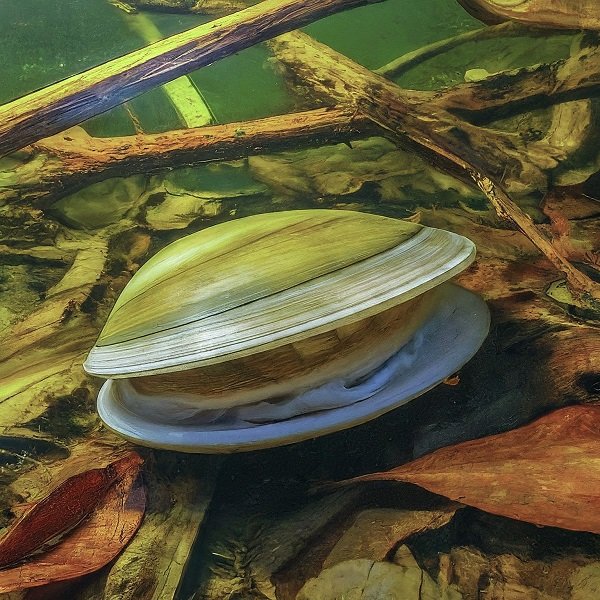
I. Introduction
Pond clams, also known as freshwater clams or mussels, are fascinating creatures that play crucial roles in maintaining the health and balance of aquatic ecosystems. These bivalve mollusks are found in various freshwater habitats worldwide, from natural ponds to man-made lakes. Understanding their significance and how they interact with their environment is essential for managing and preserving these delicate ecosystems.
II. Types of Pond Clams
A. Freshwater Pond Clams
Freshwater pond clams encompass a diverse array of species adapted to different environmental conditions. They can vary in size, shape, and coloration, but they all share similar characteristics and ecological functions.
B. Specific Regions:
- Maryland Pond Clams: In regions like Maryland, pond clams contribute to the ecological balance of freshwater bodies, serving as indicators of water quality and habitat health.
- Pond Clams in the UK: Similarly, in the UK, pond clams are vital components of freshwater ecosystems, contributing to biodiversity and ecosystem services.
III. Habitat and Living Conditions
A. Can Clams Live in a Pond?
Yes, clams can thrive in pond environments, provided certain conditions are met. They require clean water, sufficient oxygen levels, and suitable substrate for burrowing.
B. Clams in Different Pond Environments:
- Freshwater Ponds: These natural or man-made bodies of water provide suitable habitats for various freshwater species, including pond clams.
- Fish Ponds: In fish ponds, clams can coexist with other aquatic organisms, contributing to nutrient cycling and water filtration.
C. Clamshell Pond Dynamics
The presence of clamshells in pond sediment can influence nutrient cycling, sediment stability, and habitat availability for other organisms, highlighting the interconnectedness of pond ecosystems.
IV. Ecological Role and Benefits
A. Are Clams Good for a Pond?
Yes, clams play essential roles in pond ecosystems. They act as natural filters, feeding on organic particles and helping to clarify water.
B. Pond Clarifiers: How Clams Help Maintain Water Quality
By filtering suspended particles, pond clams improve water clarity and quality, benefiting aquatic plants, fish, and other organisms.
C. What Eats Clams in a Pond?
Clams serve as a food source for various aquatic species, including fish, birds, and certain invertebrates, contributing to the food web dynamics of pond ecosystems.
D. Interaction with Other Pond Species
Clams interact with other pond inhabitants, such as fish and macroinvertebrates, influencing community structure and ecosystem function.
V. Human Interaction
A. Can You Eat Clams from a Pond?
While freshwater clams are edible, consuming them from ponds raises concerns about water quality and contamination. It’s essential to follow guidelines for safe harvesting and consumption.
B. Regulations and Safety Considerations
Regulations regarding clam harvesting and consumption vary by region, with authorities implementing measures to protect public health and conserve natural resources.
C. How Many Clams in a Pound?
The number of clams in a pound can vary depending on species, size, and environmental factors, making it challenging to provide a precise estimate.
VI. Introduction and Management
A. Can I Put Clams in My Pond?
Introducing clams to a pond can be beneficial for water quality and ecosystem health, but careful consideration of habitat suitability and potential impacts is necessary.
B. Why Do I Have Clams in My Pond?
Clams may naturally colonize ponds through various means, such as waterfowl dispersal or accidental introduction, highlighting the importance of understanding dispersal mechanisms and ecological processes.
C. Best Practices for Introducing Clams to a Pond
When introducing clams to a pond, selecting native species, monitoring water quality, and minimizing disturbance to existing habitats are essential for successful establishment and long-term management.
VII. Conclusion
Pond clams are integral components of freshwater ecosystems, contributing to water quality, nutrient cycling, and biodiversity. Understanding their ecological roles and interactions is crucial for effective pond management and conservation efforts.
VIII FAQs: Understanding Pond Clams
Are Clams Good for a Pond?
Yes, clams are beneficial for pond ecosystems. They help improve water quality by filtering out suspended particles and organic matter, which can contribute to clearer and healthier water conditions. Additionally, clams play roles in nutrient cycling and sediment dynamics, enhancing the overall ecological balance of ponds.
What Are Water Clams?
Water clams, also known as freshwater clams or freshwater mussels, are bivalve mollusks that inhabit freshwater environments such as ponds, rivers, and lakes. They belong to the family Unionidae and play important ecological roles in aquatic ecosystems.
Are Freshwater Clams Good to Eat?
Freshwater clams are edible and have been consumed by humans for centuries. However, there are considerations regarding their safety for consumption. Clams can accumulate contaminants from their environment, such as heavy metals and pollutants, which may pose risks to human health if consumed. Therefore, it’s crucial to harvest clams from clean, unpolluted waters and to follow guidelines for safe preparation and consumption.
Is a Freshwater Mussel a Clam?
While freshwater mussels and clams belong to the same class (Bivalvia) and share similar physical characteristics, they are distinct groups with differences in anatomy and ecology. Freshwater mussels typically have elongated shells and are often found attached to substrates, while freshwater clams may have rounder shells and are more commonly found buried in sediment. Despite these differences, both freshwater mussels and clams play important ecological roles in freshwater ecosystems.
IX You may also like
- https://giobelkoicenter.com/koi-fish-meaning/
- https://giobelkoicenter.com/most-expensive-koi-fish/
- https://giobelkoicenter.com/matsuba-koi/
- https://giobelkoicenter.com/koi-egg-bound/
- https://giobelkoicenter.com/metronidazole-for-fish/